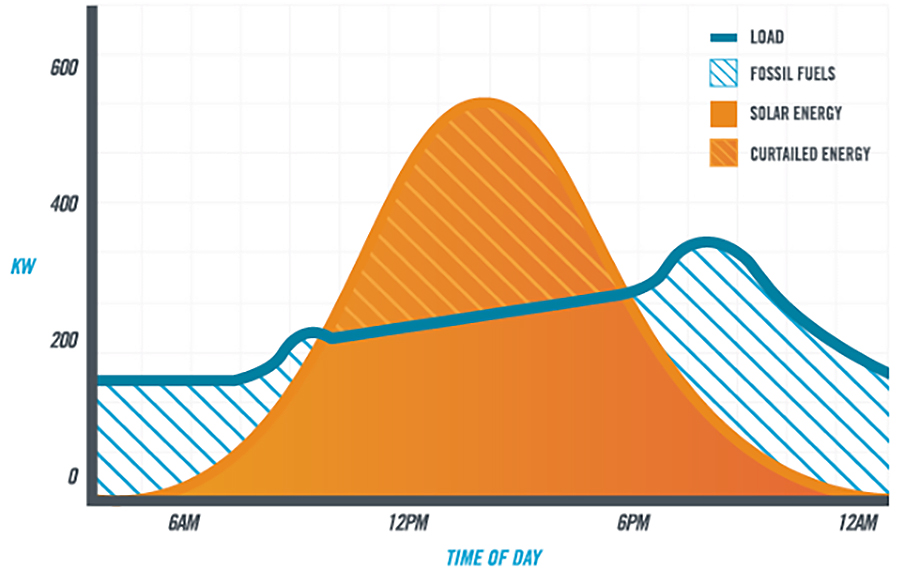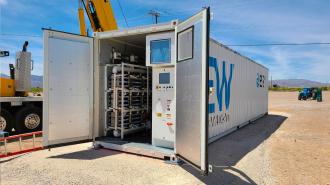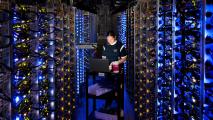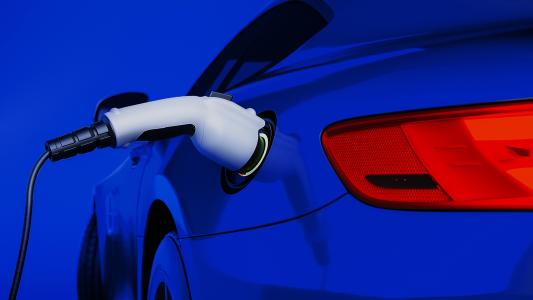A California utility company is testing whether iron-flow batteries could be the answer to the renewable energy storage problem — a major hurdle between us and a future powered by clean energy.
The challenge: Renewable energy may be better for the environment, but it can’t compete with fossil fuels when it comes to consistency — you can burn natural gas anytime, but you can’t force the sun to shine or the wind to blow.
This variability is a challenge over the course of the day, since wind or solar output often peaks at different times than energy demand. This results in wasted energy when renewables are producing more than the grid needs and forces us to rely on fossil fuels to fill in the gap when they fall short.

The status quo: To close this reliability gap — and open the door to an electric grid powered solely by renewables — we need a way to store excess renewable energy when supply is high for use when it’s low.
Batteries are the most scalable way to do this, but the type most commonly used by utility companies, lithium-ion batteries, aren’t ideal.
Those batteries are always losing a little bit of charge, which affects their efficiency, and after a while, they lose their ability to hold any charge (something you may know from owning a smartphone).
Lithium-ion batteries are also prone to overheating and catching fire, which makes them a huge safety hazard. Additionally, mining the metals needed for them is an environmentally destructive process, and the supply of those metals may not be enough to meet all of our needs.
The alternative: Lithium-ion batteries aren’t the only option, though, and Oregon-based company ESS Inc. is on a mission to make an alternative type, called an “iron-flow battery,” the renewable energy storage solution of the future.
These use electro-chemical reactions involving two abundant, non-toxic materials — saltwater and iron — to store a charge, and they’re about as safe as batteries get. ESS says its iron-flow batteries don’t degrade over time and have an expected lifespan of 20,000 cycles (compared to 3,000 to 4,000 cycles for lithium-ion batteries).
ESS has designed two energy solutions around its iron-flow batteries: the Energy Center, a larger system ideal for utility providers, and the Energy Warehouse, a shipping container-sized system designed for easy deployment at commercial and industrial sites.
Each Energy Warehouse has a peak capacity of 500 kilowatt-hours — enough to power the average American home for about 3 weeks — while the Energy Centers are designed to be scalable to “any project size.”
What’s new? On September 11, ESS announced that it had delivered six Energy Warehouses to the Sacramento Municipal Utility District (SMUD), which serves a population of 1.5 million people and relies on carbon-free sources to supply about 50% of its energy.
“We’re excited to embrace cutting-edge technologies … to deliver and grow long-duration energy storage.”
Paul Lau
SMUD’s plan is to use this installation to learn the ins and outs of working with iron-flow batteries, which are more complex than lithium-ion ones, before scaling up to a larger installation featuring at least one Energy Center.
“SMUD is on a bold journey to eliminate all carbon emissions from our power supply by 2030 without compromising our world class reliability and rates that are consistently among the lowest in California,” said Paul Lau, CEO and general manager of SMUD.
“We’re excited to embrace cutting-edge technologies, including through our partnership with ESS, to deliver and grow long-duration energy storage,” he continued.
The big picture: ESS has been delivering its batteries to customers since 2015, but if the SMUD partnership scales up as planned, it will be the biggest installation of any iron-flow battery system to date.
That means it’ll be our first opportunity to see whether they really could be the answer to the renewable energy storage problem — or if we need to keep exploring other alternatives.
We’d love to hear from you! If you have a comment about this article or if you have a tip for a future Freethink story, please email us at [email protected].






